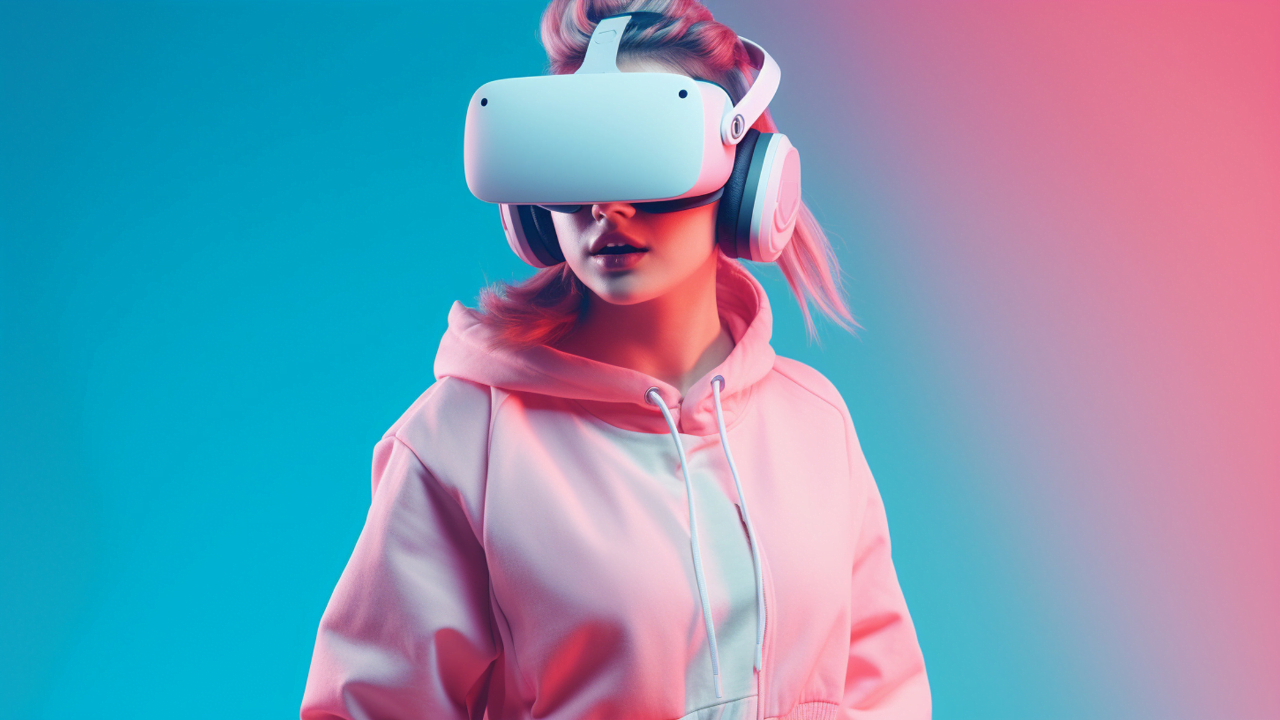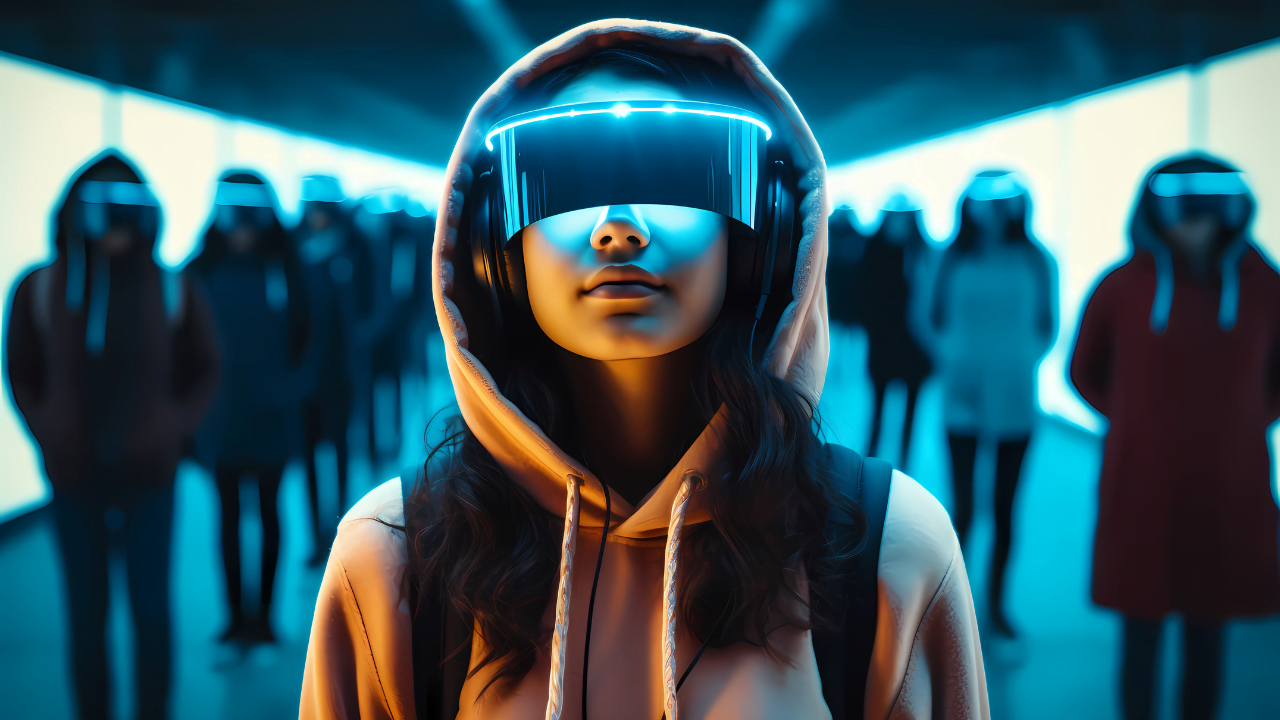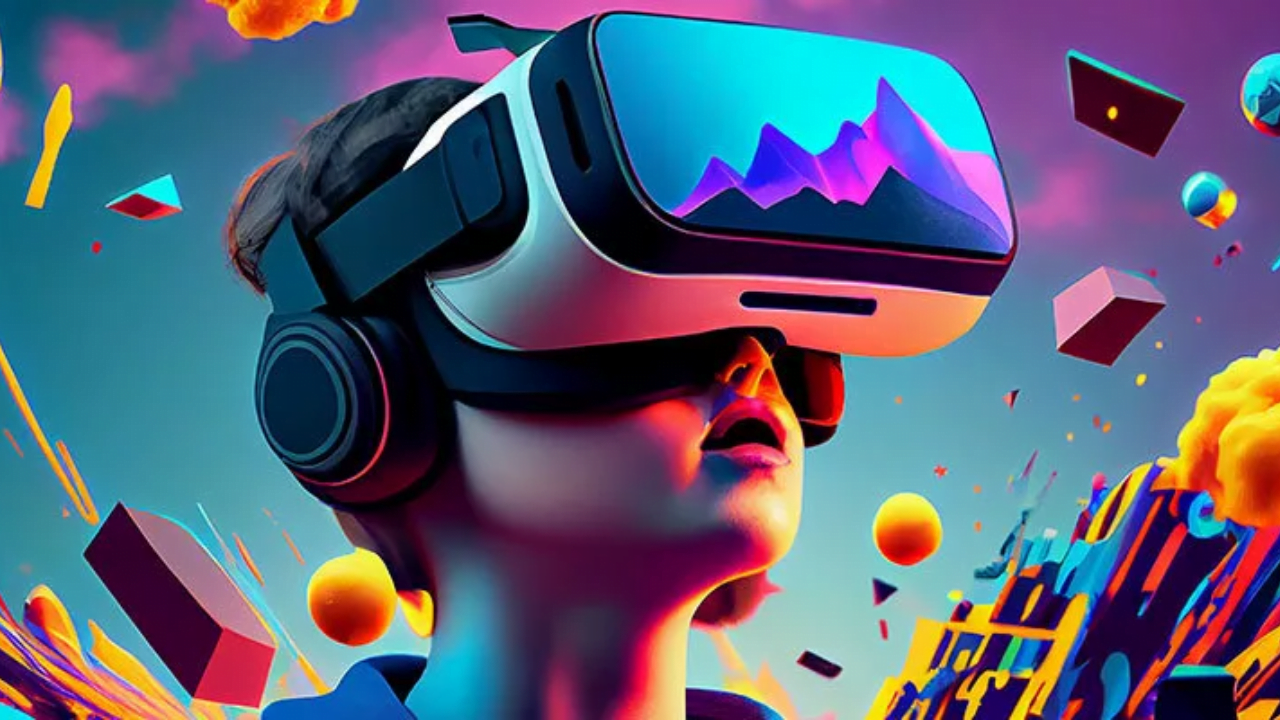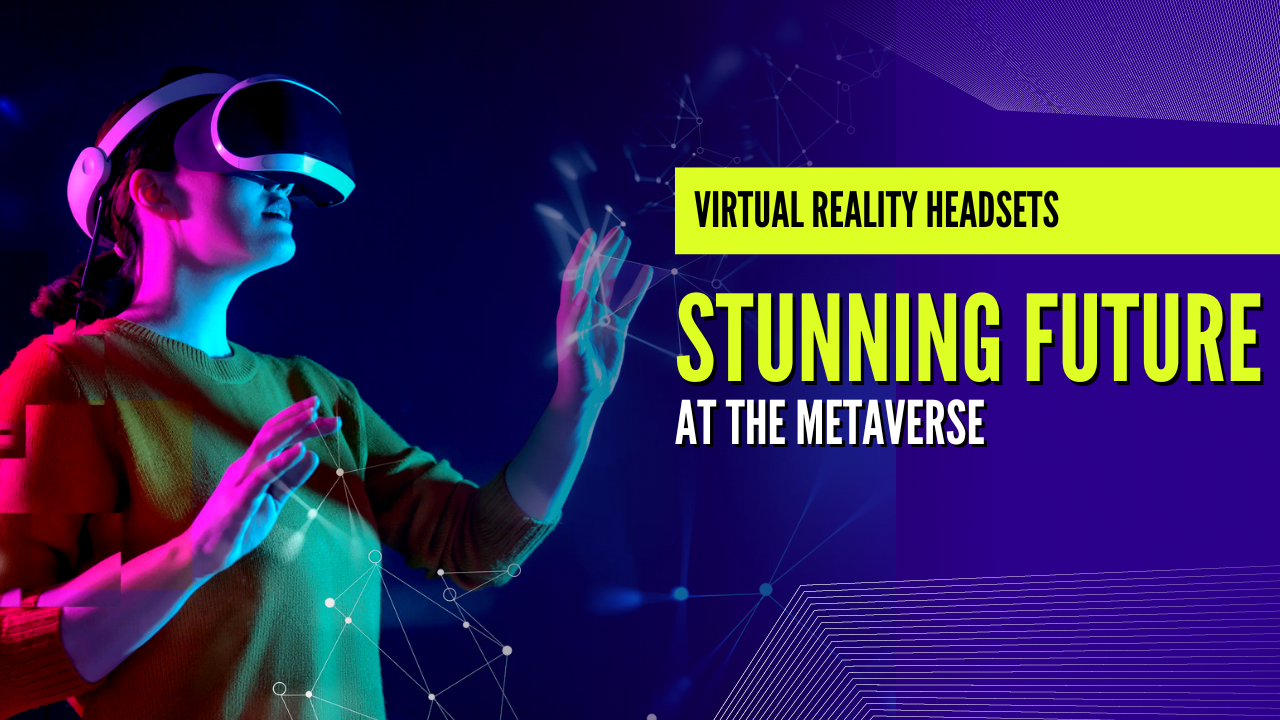Virtual reality headsets are revolutionizing entertainment, gaming, and even professional industries, offering immersive experiences that blur the lines between digital and reality. With advancements in AI driven graphics, ultra high resolution displays, and full body motion tracking, today’s VR headsets deliver unparalleled realism.
Whether you’re searching for the best VR headset for gaming, exploring full dive VR possibilities, or considering affordable VR headsets for beginners, the choices can be overwhelming. From wireless standalone VR to high performance PC VR systems, understanding key features like refresh rates, field of view, and tracking precision is crucial. In this guide, we’ll explore the top VR headsets, their capabilities, and how to choose the perfect one for your needs.
Virtual Reality Headsets: The Ultimate Guide to Immersive Technology
What Are Virtual Reality Headsets?
Virtual reality headsets let you step into a digital world where you can interact, explore, and experience environments like never before. These devices use high resolution displays, motion tracking, and 3D audio to create lifelike experiences. Whether you’re into VR gaming, virtual meetings, fitness training, or education, VR headsets provide an unmatched level of immersion.
From wireless standalone VR headsets to high performance PC VR systems, there are many options to choose from. In this guide, we’ll break down everything you need to know to find the best VR headset for your needs.
How Do Virtual Reality Headsets Work?
A VR headset creates a 360 degree virtual environment by displaying separate images for each eye, giving the illusion of depth and space. It tracks head movements using gyroscopes, accelerometers, and external or inside out monitoring sensors.
Some advanced models, like the Meta Quest 3 and PlayStation VR2, feature hand and eye tracking and haptic feedback controllers to enhance realism. With AI powered rendering and foveated rendering, VR systems optimize graphics based on where you look, ensuring smooth performance without lag.
Types of Virtual Reality Headsets
1. Standalone VR Headsets
Standalone VR headsets, such as the Meta Quest 3 and Pico 4, are wireless and don’t require a PC or console. They are easy to set up and great for casual users. These headsets come with built in processors, storage, and tracking systems, making them convenient for gaming, workouts, and social VR experiences.
2. PC Powered VR Headsets
PC VR headsets, like the Valve Index and HTC Vive Pro 2, deliver high quality graphics but require a powerful gaming PC. They offer high refresh rates, wider field of view (FOV), and external tracking sensors for precise movement detection. These headsets are ideal for professional VR gaming, simulation training, and creative applications like VR design and development.
3. Console VR Headsets
Console VR headsets, such as PlayStation VR2, are designed to work with gaming consoles. They provide an affordable way to experience VR without needing a PC. These headsets come with high resolution OLED displays, adaptive triggers, and haptic feedback, making gaming more immersive.
4. Tethered vs. Wireless VR Headsets
Some VR headsets, like the HTC Vive XR Elite, offer both wired and wireless options. Wireless VR headsets provide more freedom of movement, while wired headsets ensure a stable connection and better performance.
Key Features to Consider in a VR Headset
- Display Quality: For sharp visuals, choose a higher resolution (4K or 8K) OLED or LCD screen.
- Refresh Rate: 90Hz to 144Hz ensures smooth motion, reducing motion sickness.
- Field of View (FOV): A wider FOV (110° to 130°) enhances immersion.
- Tracking System: Inside out tracking eliminates the need for external sensors.
- Hand Tracking & Eye Tracking: Advanced features improve interaction and performance.
- Haptic Feedback Controllers: Create realistic sensations when touching objects in VR.
- Battery Life: Standalone VR headsets should have at least 2 to 3 hours of battery life.
The Future of Virtual Reality Headsets
The next generation of VR headsets is set to bring full dive VR experiences where users can interact in digital worlds using brain computer interfaces. AI powered VR environments, lightweight designs, and cloud based VR streaming will redefine immersive experiences. Innovations in neural interfaces, ultra low latency, and real time AI driven interactions will make virtual reality more lifelike than ever before.
As virtual reality technology continues to evolve, choosing the right headset depends on your needs whether for gaming, professional use, or social VR experiences. The future is here, and VR headsets are at the forefront of the digital revolution! 🚀
How Virtual Reality Headsets Work

Advanced Stereoscopic Displays and Depth Perception
Virtual reality headsets use stereoscopic displays to create lifelike 3D experiences. Each eye sees a slightly different image, mimicking real world depth perception. This trickery allows the brain to merge both images, producing an immersive virtual environment. High resolution displays, adjustable lenses, and minimal pixelation enhance visual clarity. The goal is to make virtual worlds feel natural and eliminate strain on the eyes.
Motion Tracking: Gyroscopes, Accelerometers, and Magnetometers
Accurate motion tracking is crucial for seamless VR interaction. Modern headsets use gyroscopes to detect head rotation, accelerometers to measure speed and movement, and magnetometers to maintain orientation. These sensors work together to track real time head motion with precision the faster and more accurate the tracking, the smoother the VR experience. High end headsets integrate AI driven tracking algorithms to enhance responsiveness.
Refresh Rate and Frame Rate: The Backbone of VR Immersion
A high refresh rate and smooth frame rate are essential for avoiding motion sickness in VR. The refresh rate (Hz) determines how often the display updates per second, while the frame rate (FPS) controls the fluidity of movement. Anything below 90Hz can cause dizziness, while 120Hz+ offers ultra smooth interactions. The latest VR headsets optimize frame pacing and latency to create a natural and comfortable experience.
Inside Out vs. Outside In Tracking: Precision in Movement
VR tracking systems fall into two categories:
- Inside out tracking: Uses built in cameras and sensors to map surroundings, eliminating the need for external devices. It is found in wireless headsets like the Meta Quest series.
- Outside in tracking: Relies on external base stations for pinpoint accuracy, often used in high end VR like the Valve Index. This system provides superior tracking for professional applications and gaming.
AI Powered Foveated Rendering and Eye Tracking
Foveated rendering revolutionizes VR by focusing processing power on where the user is looking. AI driven eye tracking detects gaze direction, reducing the need to render the entire scene in full detail. This boosts graphics quality and performance while lowering GPU load. Additionally, real time eye tracking enhances social interactions, enabling realistic eye contact and natural avatar movements.
The Future of VR: Smarter, Faster, More Immersive
As AI and machine learning evolve, VR headsets will become even more advanced. Expect better tracking, sharper displays, and improved comfort. Features like neural interfaces, full body tracking, and ultra low latency streaming will push VR beyond entertainment into everyday applications. The future of virtual reality is limitless.
Types of Virtual Reality Headsets
Virtual reality headsets come in different types, each offering unique features for various users. Whether you need wireless freedom, high performance visuals, or console based gaming, there is a VR headset designed for your needs.
a) Standalone VR Headsets
Standalone VR headsets, such as Meta Quest 3 and Pico 4, offer a wireless, all in one VR experience without needing a PC or console. These headsets have built in processors, storage, and motion tracking, making them easy to use and highly portable. They are best for casual gaming, VR fitness apps, and social experiences. The lack of cables provides unrestricted movement, but they may have lower graphics quality than PC powered headsets.
b) PC Powered VR Headsets
PC VR headsets, like the Valve Index and HTC Vive Pro 2, deliver high end virtual reality with stunning graphics, low latency, and ultra smooth gameplay. These wired VR headsets require a powerful gaming PC to run and offer high refresh rates, precise motion tracking, and a wider field of view. They are ideal for VR gaming, simulation training, and 3D content creation. While they provide the most immersive experience, they require space for sensors and setup.
c) Console VR Headsets
Console VR headsets, such as the PlayStation VR2, are designed for console gamers looking for affordable immersive experiences. These headsets connect directly to gaming consoles and provide high quality VR gameplay with motion tracking and haptic feedback. Compared to PC VR, they are a budget friendly option, but they may have limited compatibility with non console applications.
d) Tethered vs. Wireless VR Headsets
Tethered VR headsets offer better performance, stable connections, and no battery limitations but restrict movement due to cables. They are best for professional VR applications and competitive gaming. Wireless VR headsets, on the other hand, provide complete freedom of movement and are easier to set up. However, they may have higher latency, limited battery life, and reduced graphical quality. Choosing between them depends on whether you prioritize performance or mobility.
Each VR headset type caters to different needs, from casual gaming and fitness to high end simulations and creative applications.
Key Features to Look for in a VR Headset

Choosing the right VR headset can transform your virtual experience. High quality visuals, smooth motion, and comfort are essential for immersive gameplay, training, or virtual meetings. Here are the key features you should consider before buying a VR headset.
1. Display Technology: OLED vs. LCD
The display is the heart of a VR headset. OLED screens offer deep blacks and vibrant colors, making virtual environments feel lifelike. LCD screens are brighter and more power efficient, providing sharp visuals. For the best experience, look for a 4K VR headset or even an 8K resolution VR headset to eliminate pixelation and enhance clarity.
2. Field of View (FOV) for Real Immersion
A wider VR headset field of view (FOV) increases realism. Most headsets offer 100° to 110° FOV, but advanced models go beyond 120°, making virtual objects feel more natural. A larger FOV helps with depth perception, enhancing both gaming and professional VR applications.
3. High Refresh Rate for Smooth Motion
A VR headset with a 90Hz or higher refresh rate reduces motion blur and nausea. 120Hz VR headsets and 144Hz VR headsets offer ultra smooth visuals, which is crucial for fast paced gaming and simulations. The higher the refresh rate, the better the experience.
4. Tracking System: Inside Out vs. External
Inside out tracking uses built in cameras for movement detection, offering a wireless and hassle free experience. External tracking VR headsets, which use base stations, provide precise motion tracking, making them ideal for professional and high end gaming setups.
5. Hand Tracking & Eye Tracking for Next Level Interaction
Hand tracking VR headsets allow you to interact without controllers, making movements more natural. Eye tracking VR headsets improve realism by adjusting focus based on where you look. This enhances graphics performance and enables foveated rendering, which boosts processing efficiency.
6. Haptic Feedback Controllers for Realistic Sensations
Feeling virtual objects is possible with haptic feedback VR controllers. They simulate touch, vibration, and pressure, making interactions more immersive. Advanced VR gloves with haptic feedback further enhance realism in training, design, and gaming.
7. Comfort & Ergonomics for Long Sessions
A lightweight VR headset with an adjustable strap prevents strain during prolonged use. Ventilation, soft padding, and an even weight distribution make a big difference. Ergonomic VR headsets ensure a comfortable fit for all head sizes.
8. Battery Life for Wireless Freedom
Wireless VR headsets need a long battery life to keep you in the game. Standalone VR headsets should last at least 3 to 5 hours per charge. Fast charging and replaceable batteries improve usability, ensuring uninterrupted VR sessions.
Best VR Headsets for Different Uses
Virtual reality technology is advancing rapidly, providing immersive experiences for various needs. Whether you’re a gamer, professional, fitness enthusiast, or budget conscious buyer, there’s a VR headset tailored to your needs. Here are the top choices in each category.
1. Best VR Headset for Gaming
For the ultimate gaming experience, high performance VR headsets offer top tier visuals, low latency, and fast refresh rates.
- Valve Index and HTC Vive XR Elite deliver high resolution displays and precise motion tracking.
- PC powered vs. Standalone: Valve Index requires a powerful PC, while Meta Quest 3 offers standalone portability.
- Immersive Gameplay: Advanced haptic controllers and 120Hz refresh rates ensure fluid motion and realism.
2. Best VR Headset for Business & Productivity
Businesses use VR for virtual meetings, remote collaboration, and professional applications like 3D modeling.
- Meta Quest Pro and Pico 4 Enterprise support AI powered virtual workspaces and secure communication.
- 3D Design & Prototyping: Varjo XR 4 provides ultra realistic rendering for architects and designers.
- Enterprise Features: Eye tracking, mixed reality capabilities, and ergonomic designs enhance efficiency.
3. Best VR Headset for Fitness & Health
VR fitness is revolutionizing workouts with interactive training programs and motion tracking.
- Engaging Workouts: Games like Beat Saber, Supernatural, and FitXR provide full body movement.
- Advanced Motion Tracking: HTC Vive Pro 2 integrates real time full body tracking.
- Health Benefits: Virtual reality supports meditation, rehabilitation, and cardio focused activities.
4. Best Budget VR Headsets
Affordable VR headsets offer accessible entry points for newcomers.
- Best Value Options: Meta Quest 2 and PlayStation VR balance cost and performance.
- What to Expect: Budget friendly models have lower resolution and tracking precision but still deliver fun experiences.
- Perfect for Beginners: These headsets are ideal for casual gaming and entertainment without significant investment.
Applications of Virtual Reality Headsets

Virtual reality (VR) headsets are transforming industries with immersive and interactive experiences. From gaming and healthcare to business and education, VR is reshaping how we engage with digital environments. Here’s how VR is revolutionizing key sectors:
1. Gaming & Entertainment
VR gaming offers a next level experience with lifelike graphics, motion tracking, and haptic feedback. Multiplayer social VR allows players to interact in virtual worlds, creating realistic and engaging gameplay. Esports is evolving with VR tournaments, attracting professional gamers worldwide.
VR arcades and theme parks provide thrilling, immersive attractions that bring digital adventures to life. As technology advances, AI driven characters, and adaptive storylines are making VR gaming even more dynamic.
2. Education & Training
VR is transforming education with hands on, real world simulations. Medical students use VR for surgical training in risk free environments. Engineers design, test, and refine prototypes using virtual workspaces. Flight simulators train pilots with realistic in aircraft experiences, improving safety and performance.
Virtual classrooms make learning more engaging with interactive 3D lessons. AI powered VR tutors adapt content to each student’s needs, creating a personalized and practical learning experience.
3. Healthcare & Therapy
VR is revolutionizing healthcare with innovative treatments. Patients use VR for pain management, reducing discomfort during medical procedures. Mental health professionals use VR therapy to treat anxiety, PTSD, and phobias by recreating controlled environments.
Rehabilitation centers integrate VR exercises to help stroke patients regain motor skills. AI driven VR therapy provides personalized support for stress relief and emotional well being. As VR healthcare continues to evolve, its potential for improving patient outcomes is limitless.
4. Business & Productivity
Businesses are embracing VR for collaboration, efficiency, and innovation. Virtual meetings allow teams to connect in immersive 3D workspaces, improving remote communication. AI powered VR workspaces automate tasks and enhance productivity.
Real estate companies offer virtual property tours, helping buyers explore homes without visiting in person. Product designers and architects use VR to visualize, refine, and present projects in a realistic digital format. Companies across industries are adopting VR to streamline workflows and drive innovation.
Virtual reality is no longer just a futuristic concept it’s shaping industries today. As AI and VR continue to evolve, their impact on gaming, education, healthcare, and business will only grow. The future of VR is limitless, offering endless opportunities for innovation and advancement.
Challenges and Limitations of VR Headsets
Virtual reality has transformed gaming, training, and digital interaction. However, VR headsets still face significant challenges. Issues like motion sickness, high costs, and battery limitations impact user experience. Understanding these limitations helps developers improve VR technology.
1. Motion Sickness and VR Fatigue
Many users experience dizziness and nausea in virtual environments. Motion sickness happens when the brain receives conflicting signals from the eyes and inner ear. Poor frame rates, high latency, and rapid movement make symptoms worse. VR fatigue also occurs with prolonged use, leading to eye strain and discomfort. Advanced headsets with higher refresh rates and improved tracking help reduce these issues, but not all devices offer this technology.
2. High Cost of Premium VR Headsets
VR headsets with top features come at a high price. Devices like the Meta Quest Pro, HTC Vive XR Elite, and Valve Index cost hundreds or even thousands of dollars. The advanced display technology, motion tracking, and sensors increase production costs. While budget friendly VR options exist, they often lack high end features, limiting immersion and performance.
3. Technical Requirements for High End PC VR Systems
PC powered VR systems need powerful hardware for smooth performance. Running a VR headset like the Valve Index or HP Reverb G2 requires a high end GPU, such as an RTX 3070 or better. Many users struggle with compatibility issues, driver updates, and system optimizations. Upgrading a PC for VR can be expensive, making high quality experiences less accessible.
4. Battery Life Limitations in Standalone Headsets
Standalone VR headsets offer wireless freedom but have limited battery life. Devices like the Meta Quest 3 and Pico 4 typically last only 2 to 3 hours per charge. Power hungry features such as hand tracking, high resolution displays, and AI processing drain batteries quickly. External battery packs extend usage time, but they add extra weight, affecting comfort.
5. Accessibility Issues and Potential Health Concerns
VR is not equally accessible to all users. High costs, complex setups, and physical space requirements make it difficult for many people to adopt VR technology. Users with disabilities may struggle with VR controllers, hand tracking, or movement based interactions. Health concerns include eye strain, headaches, and posture related issues. Parents are also concerned about the impact of prolonged VR use on children’s vision and brain development.
Future Improvements in VR Technology
Despite these challenges, VR is advancing rapidly. Developers are working on reducing motion sickness, improving affordability, and extending battery life. Future VR headsets will focus on lighter designs, better comfort, and enhanced accessibility. As technology evolves, VR will become more immersive and user friendly for everyone.
The Future of Virtual Reality Headsets
Virtual reality is evolving fast, bringing us closer to full dive VR and neural interfaces. These breakthroughs will let users experience VR directly through brain signals, eliminating the need for controllers. AI driven VR environments will create intelligent, adaptive worlds where everything responds in real time. Cloud based VR gaming will make high end experiences accessible on any device, reducing the need for expensive hardware.
Next gen VR headsets will be ultra thin and lightweight and feature 8K resolution for crystal clear visuals. Eye tracking and hand tracking will enhance immersion, making interactions feel natural. Mixed reality (MR) and augmented reality (AR) will merge digital and real worlds, transforming gaming, training, and remote collaboration. The future of VR will deliver hyper realistic, seamless experiences, changing how we work, play, and connect.
FAQs:
Q1. What is a Virtual Reality Headset, and How Does It Work?
A VR headset is a device that provides an immersive digital experience by displaying 3D visuals through stereoscopic screens. It uses motion tracking, sensors, and hand controllers to let users interact with virtual environments in real time.
Q2. What Are the Different Types of VR Headsets?
There are standalone VR headsets (wireless, built in processors), PC powered VR headsets (high end performance, requires a gaming PC), and console VR headsets (compatible with gaming consoles like PlayStation VR2).
Q3. What Is the Best VR Headset for Gaming?
For high end gaming, Valve Index, HTC Vive XR Elite, and PlayStation VR2 offer high refresh rates, wide field of view, and superior motion tracking. Meta Quest 3 is excellent for wireless gaming.
Q4. Do VR Headsets Cause Motion Sickness?
Some users may experience VR motion sickness due to low refresh rates, latency, or a lack of smooth movement tracking. To reduce discomfort, opt for headsets with 90Hz+ refresh rates and adjust settings.
Q5. What’s the Difference Between Tethered and Wireless VR?
Tethered VR headsets connect to a PC or console for better graphics and performance. In contrast, wireless VR headsets offer more freedom but may have lower graphics quality and battery life limitations.
Q6. Can You Use a VR Headset Without a PC or Console?
Yes, standalone VR headsets like Meta Quest 3 and Pico 4 work independently, with built in processors and storage. However, they may not offer the same high end graphics as PC powered VR systems.
Q7. Are VR Headsets Safe for Kids?
Most manufacturers recommend VR for ages 13 and above due to potential effects on eye development and motion sickness. Some VR apps have parental controls for a safer experience.
Q8. How Much Does a Good VR Headset Cost?
Prices vary depending on the features, ranging from $300 to $1,500+. Budget friendly options include Meta Quest 2, while high end choices like Valve Index and HTC Vive Pro 2 offer premium experiences.
Q9. What Are the Best Uses of VR Beyond Gaming?
VR is used for virtual meetings, remote work, medical training, therapy, education, fitness, and even real estate tours. Businesses also use AI powered VR environments to increase productivity.
Q10. What’s the Future of Virtual Reality Headsets?
The next gen VR headsets will feature AI enhanced realism, full body tracking, 8K resolution, neural interfaces, and cloud based VR gaming for ultra immersive experiences.
Conclusion:
Virtual reality headsets are transforming entertainment, gaming, education, and even business. With advancements in AI, motion tracking, and high resolution displays, VR is becoming more immersive and accessible. Whether you’re a gamer, professional, or fitness enthusiast, there’s a VR headset to match your needs. As technology evolves, expect lighter, more powerful, and AI driven VR experiences that push the boundaries of digital interaction. The future of VR is just beginning, and it’s more exciting than ever! 🚀

